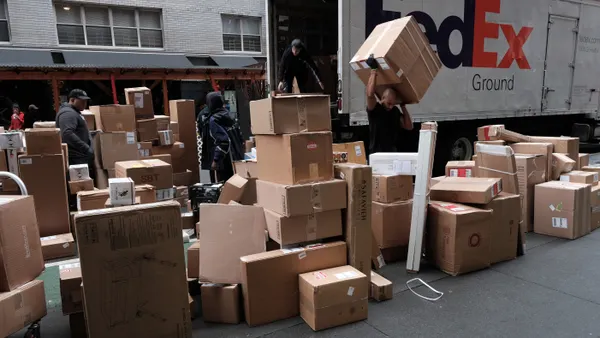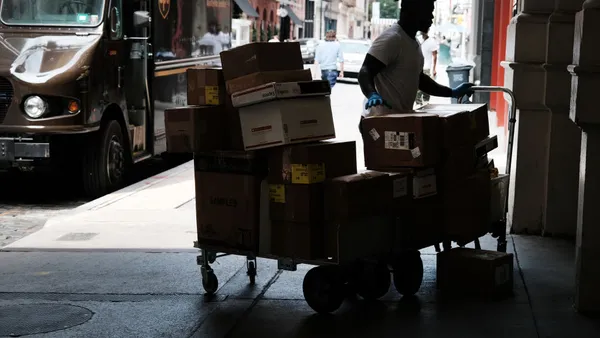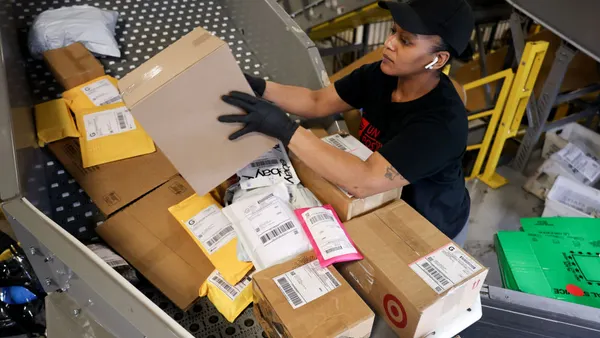Dive Brief:
- After an all-cost and no-benefit ramp-up to seven-day service, FedEx executives lowered earnings projections for the fourth time in a row on an earnings call Tuesday. Revenue for the quarter ending Nov. 30 was down 3% year-over-year, while operating income and operating margins were essentially cut in half. "I am not pleased with our financial results," President and COO Raj Subramaniam said on the call.
- Cost per piece for the quarter increased 6% while revenue per piece stayed relatively flat, which executives attributed largely to the increased labor cost of the transition to seven-day service.
- To stop the bleeding in the near-term, the carrier will decrease domestic and international air capacity post-peak, retiring 10 aircraft and parking more, combined with what Subramaniam described as "an overall reduction of costs in our Express business." The move will decrease total flight hours by 68% year-over-year in Q4. January rate increases as well as additional accessorial and surcharges are on the way as well.
Dive Insight:
"We continue to be in a period of challenges and changes," said CEO Fred Smith at the start of the call. The first of those challenges was the calendar. The period between Thanksgiving and Christmas 2019 is shorter than most due to a late Thanksgiving. Smith said this dynamic added to the expense of operations, evident in the quarter that just wrapped up and the current quarter. The calendar also pushed Cyber Monday volume into December and therefore out of the reporting period in question.
Also a challenge, said Smith, is the slowing industrial economy, which has brought about a steady drop in international air freight and B2B domestic parcel volume. The impact of losing Amazon as a customer also hit harder in the most recent quarter than the previous one, said CFO Alan Graf.
Smith's list of challenges are common ones heard on earnings calls across sectors in the current cycle, leading some analysts on the call to question FedEx's performance since the seven-day service and the calendar quirks were somewhat predictable factors, yet the carrier's earnings were very different from prior projections.
"Standing up to six and seven-day network was very expensive for us, and the expense for peak in general, which is always put up front, was a total drag. And we certainly anticipated some of it. But we probably underestimated the cost of standing it up," said Smith, also blaming an enthusiastic response from customers for magnifying the increased expense. Smith said the company carried 37 million packages on Cyber Monday after forecasting 33 million.
In addition to decreasing air capacity, Smith said the carrier is pushing as many nonessential capital expenditures down the road, without pulling back on the fundamental changes FedEx announced throughout the year — namely seven-day service, in-sourcing SmartPost volume and expanding FedEx Freight service into big and bulky consumer delivery.
"Improving residential package density is a key aspect of [our] grand strategy to combat residential delivery costs challenges. We expect delivery density to improve as we further integrate the delivery of FedEx SmartPost operations into our standard ground operations in calendar year 2020," said Graf.













